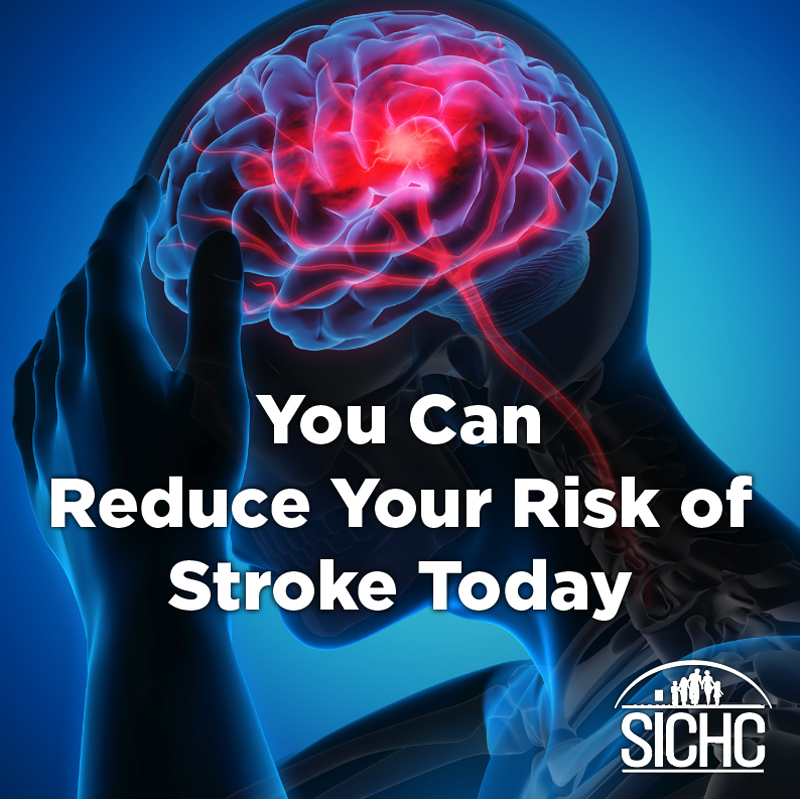You Can Reduce Your Risk of Stroke Today

By Curtis Thill, MD
It’s not a pleasant fact, but one worth considering, especially since you can take steps to reduce the risk of having it happen to you. What is it? By the time you finish reading this short column, an average of six-to-ten people will have had a stroke. During that same time, at least one person (on average) will die of complications from a stroke.
Still reading? That’s good, because there are important facts that can help reduce risk of stroke, or help you survive if you experience one.
A common fallacy is that strokes only occur among “old” people, particularly those over the age of 65. The facts? A few years ago almost 40% of Americans who were admitted to a hospital after experiencing a stroke were less than 65 years of age.
So, what are we talking about when it comes to “strokes”?
Two general types of strokes
There are two basic types of a stroke, which is a condition that causes areas of brain cell damage (or cell death). Most strokes (loss of blood flow) are caused by blood flow being blocked in an area of the brain. These are called ischemic strokes and account for about 87% of all strokes.
Other strokes can occur when a blood vessel in the brain ruptures, but these are relatively rare. When this type of stroke occurs, it is called a hemorrhagic stroke.
Let’s talk about what you can do. Strokes often occur without warning, so it is important to recognize the symptoms of a stroke. When a stroke occurs, every minute counts! Treatment in an emergency room can reduce brain damage and even save a life (including your own). Typical symptoms of a stroke in progress can include:
- Sudden numbness or weakness in the face, arm, or leg, especially on one side of the body.
- Sudden confusion, trouble speaking, or difficulty understanding speech.
- Sudden trouble seeing in one or both eyes.
- Sudden trouble walking, dizziness, loss of balance, or lack of coordination.
- Sudden severe headache with no known cause.
If you or someone you’re with suddenly experiences these symptoms, don’t wait – call 9-1-1 for help immediately! Available stroke treatments are generally most effective when a stroke victim gets help within three hours of the onset of symptoms.
Use the F.A.S.T test
Here’s a standard approach – called the F.A.S.T test – that also may help you:
If you think someone may be having a stroke, act “F.A.S.T.” and do the following:
F—Face: Ask the person to smile. Does one side of the face droop?
A—Arms: Ask the person to raise both arms. Does one arm drift downward?
S—Speech: Ask the person to repeat a simple phrase. Is the speech slurred or strange?
T—Time: If you see any of these signs, call 9-1-1 right away.
But what about prevention?
Some stroke risks are specific to gender and race. Hereditary issues can also come into play.
But there are things you can do to positively reduce the risk that you will have a stroke. Here a trusted medical partner whom you can work with can play an important role. Risks of a stroke increase significantly when someone has untreated high blood pressure, is significantly overweight, smokes cigarettes, has untreated high cholesterol, or has diabetes.
Many people living in our area of southern Indiana face these issues. As a long-time physician, I know how hard it can be to deal with these conditions. But with the help of a trusted medical professional, you can walk together to address these tough issues in a way that works for you. Find one today, begin a new journey, and reduce your risk of stroke!
A board-certified family physician, Curtis Thill has been practicing in the Crawford County region for more than 30 years.
